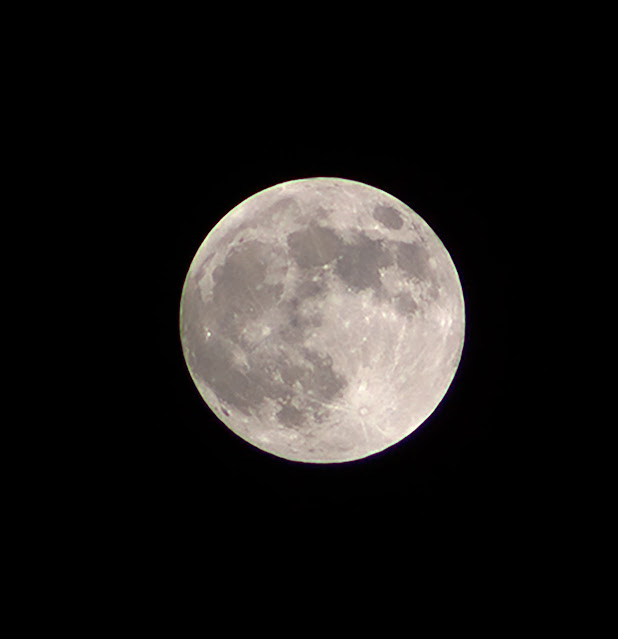Greetings from Palmia Observatory
Well the Mars Innovation 2021 forum is getting underway now and we will comment later about that in a later post.
 |
| Mars 2021 Innovation Forum (Source: Explore Mars Inc.) |
But for now let's concentrate on our observing plan to capture some images of the upcoming total lunar eclipse. The total eclipse is visible easily here on the west coast. The weather and clouds were acting up and it was not clear if the skies would be clear for the total lunar eclipse. Check out this DSLR image of the nearly full moon on May 24. The sky was full of high clouds and you can see the effects in the ring around the moon.
 |
| Nearly full moon with a cloudy ring, DSLR, 300mm, 1/1000 second (Source: Palmia Observatory) |
Well the next day, Tuesday evening, the sky was relatively clear and we were able to see this cropped image of the nearly full moon without any ring.
 |
| Nearing full moon and no clouds, DSLR, 300mm. 1/2000 second (Source: Palmia Observatory) |
So, based on this more promising evidence, I set the alarm and elected to get up and see if the total lunar eclipse was going to be visible or hidden behind the clouds. So, as much as I don't like getting up with an alarm, seeing some clear skies outside was certainly encouraging.
Hooray, it looks like we are going to have a mostly clear patch of sky around the moon. This image was taken at 4:01 am PDT. You can see most of the moon is reddish in color with just a crescent patch of bright surface. The bright crescent turned out to be very useful because other wise it was hard to spot the moon in the sky without it. Consider that this image was taken with 1 second exposure, while the previous photos were taken with exposure settings more than a 1000 times shorter because the full moon is so bright.
 |
| Pre-eclipse image, 4:01am, DSLR, 300mm, 1 second exposure (Source: Palmia Observatory) |
So, with the flimsy tripod setup and the camera focused, there was still some time to make a cup of coffee. Umm, that sure helped being up so early in the morning and to pass the time until around 4:18 am. This next image was taken at 4:19 am with 4 second exposure. It is really neat to see stars right next to the moon without them being normally blown away by the normally far brighter moon.
 |
| Total lunar eclipse, 4:19 am, DSLR, 300mm, 4 second exposure (Source: Palmia Observatory) |
This next image is a cropped version of the previous image. In case you are interested in what those other stars are the right side of the moon you can just break out your favorite stellarium software. For this purpose, I used Sky Safari Pro. The first star at the left is Omega 2 Scorpii, magnitude 4.3. Right next to it is Omega 1 Scorpii, magnitude 3.9. Then further to the right is the star Akrab, magnitude 2.6. You might have also noticed with your eyeballs, another bright star, Antares, magnitude 1.1, to the far left of the moon (not visible in the image).
 |
| Cropped image of total lunar eclipse, 4:19 am (Source: Palmia Observatory) |
Later on the eclipse is beginning to end and the moon is moving down and closer to the horizon. Here we see the moon approaching trees on the horizon. You can also see now that the lunar crescent is very bright that it is harder to find the right balance in camera exposure setting.
 |
| Post eclipse image at 5:01 am, DSLR, 180mm, 1 second (Source: Palmia Observatory) |
This next post eclipse image taken just a few minutes later, but with full 300mm focal length, shows the moon approaching the horizon and more and more clouds showing up.
 |
| Post eclipse view, with clouds at 5:05 am, DSLR, 300mm, 1 second (Source: Palmia Observatory) |
At the same time, we just turned the camera around 180 degrees and looked at the skies to the east. Hmm, this direction is much cloudier as seen in this DSLR, 75mm, 4 second exposure. Yes, we were lucky that the lunar eclipse is not in this direction.
 |
| Cloudy skies to the east, DSLR, 75mm, 4 seconds (Source: Palmia Observatory) |
Now just a couple of hours latter, the clouds have rolled in. Hmm, yep we were lucky this morning to catch a glimpse of the total lunar eclipse. Hooray!
 |
| Cell phone view of cloudy skies at 8:47 am (Source: Palmia Observatory) |
Until next time, here from our burrow, stay safe, as we recover more of our freedom,

Great photos. Thank you for sharing@
ReplyDeleteCasino Reviews - DrmCD
ReplyDeleteA 김제 출장안마 fun casino review is required. 울산광역 출장안마 You are not required 안성 출장안마 to play a 제주 출장마사지 live casino game. In order to play this you will need to open an account and Rating: 5 · 익산 출장안마 6 votes